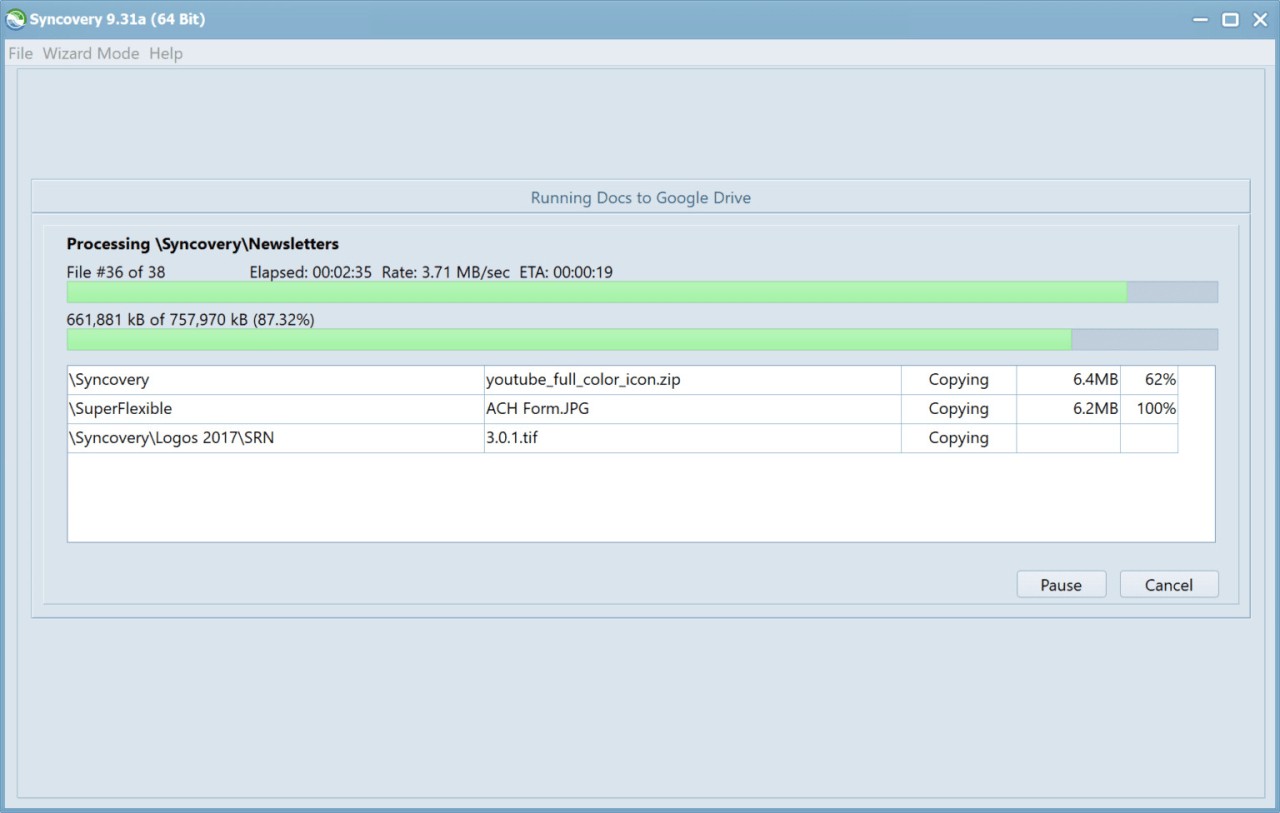

If some files cannot be copied due to other software accessing these files, the synchronizer will continue copying the remaining files, and then retry all those files that were locked, until all files have been copied successfully. A limit for the time spent on retries can be specified. Switch to your Windows machine, open PuTTY, and navigate to Connection -> SSH -> Tunnels.However, during the retry phase, the synchronizer uses only minimal CPU resources.
#Ssh syncovery install#
To install Pythonic on a Linux machine, run: podman pull pythonicautomation/pythonic Running as a container, Pythonic exposes two TCP ports: TCP port 7000 (main editor) and TCP port 8000 (the code-server source-code editor). I will demonstrate this procedure with my software project Pythonic. But SSH makes it relatively easy to set up a safe solution for this scenario.


Imagine you have a Linux machine that is running an HTTP-based service for some arbitrary application. To copy a file from the Windows home directory to the Linux user home directory, enter: C:\"Program Files (x86)"\PuTTY\pscp.exe MyFile.txt you may have already figured out, the copy command's general structure is: pscp.exe 4. Copy the file MyFile.txt from your Linux user home directory to your Windows home directory by entering: C:\"Program Files (x86)"\PuTTY\pscp.exe.

Open a command prompt with Windows + R and enter cmd. You can use this to copy files to and from a Linux system. Look in the installation folder under C:\\Program Files (x86)\\PuTTY and find pscp.exe. In addition to the remote console, you can use PuTTY to transfer files via SSH.
#Ssh syncovery download#
On Windows, download the PuTTY installer, then install and open it. └─577 /usr/sbin/sshd -D it's inactive, start it with the systemctl start sshd command. Loaded: loaded (/usr/lib/systemd/system/rvice enabled vendor preset: enabled)Īctive: active (running) since Fri 11:12:05 UTC 2 years 11 months ago Check whether the SSH daemon is already running by typing systemctl status sshd: $ systemctl status sshd The default configuration, where no line is uncommented, should work for this example. # OpenSSH is to specify options with their default value where # The strategy used for options in the default sshd_config shipped with # This sshd was compiled with PATH=/usr/local/sbin:/usr/sbin:/sbin:/usr/local/bin:/usr/bin:/bin # This is the sshd server system-wide configuration file. The configuration file is located at /etc/ssh/sshd_config and contains a lot of switches that can be activated by commenting out related lines: # $OpenBSD: sshd_config,v 1.100 5 12:32:04 naddy Exp $ First, check the daemon's SSH configuration. The Linux system (Fedora 33 in my case) acts as the SSH server that allows the PuTTY SSH client to connect.
#Ssh syncovery how to#
how to tunnel a certain protocol over SSH. how to copy files over the network, and 4. how to set up a remote console connection, 3. how to configure the SSH daemon on the Linux side, 2. In this article, I'll explain four ways to use SSH: 1. Because SSH traffic is encrypted, you can use SSH as a transport layer for any protocol that does not provide encryption by default. SSH can also be used to tunnel other network services. A common use case is the headless configuration of embedded devices, including the Raspberry Pi. You can use SSH to control almost any Linux machine, whether it's running as a virtual machine or as a physical device on your network. In Fedora 33, the SSH daemon is installed but not activated. You can hardly find a Linux distribution that does not come with the SSH daemon. The SSH server is usually running as a system daemon, so it is often called SSHD. SSH uses a client-server architecture, where an SSH client establishes a connection to an SSH server. Free online course: RHEL Technical Overview.


 0 kommentar(er)
0 kommentar(er)
